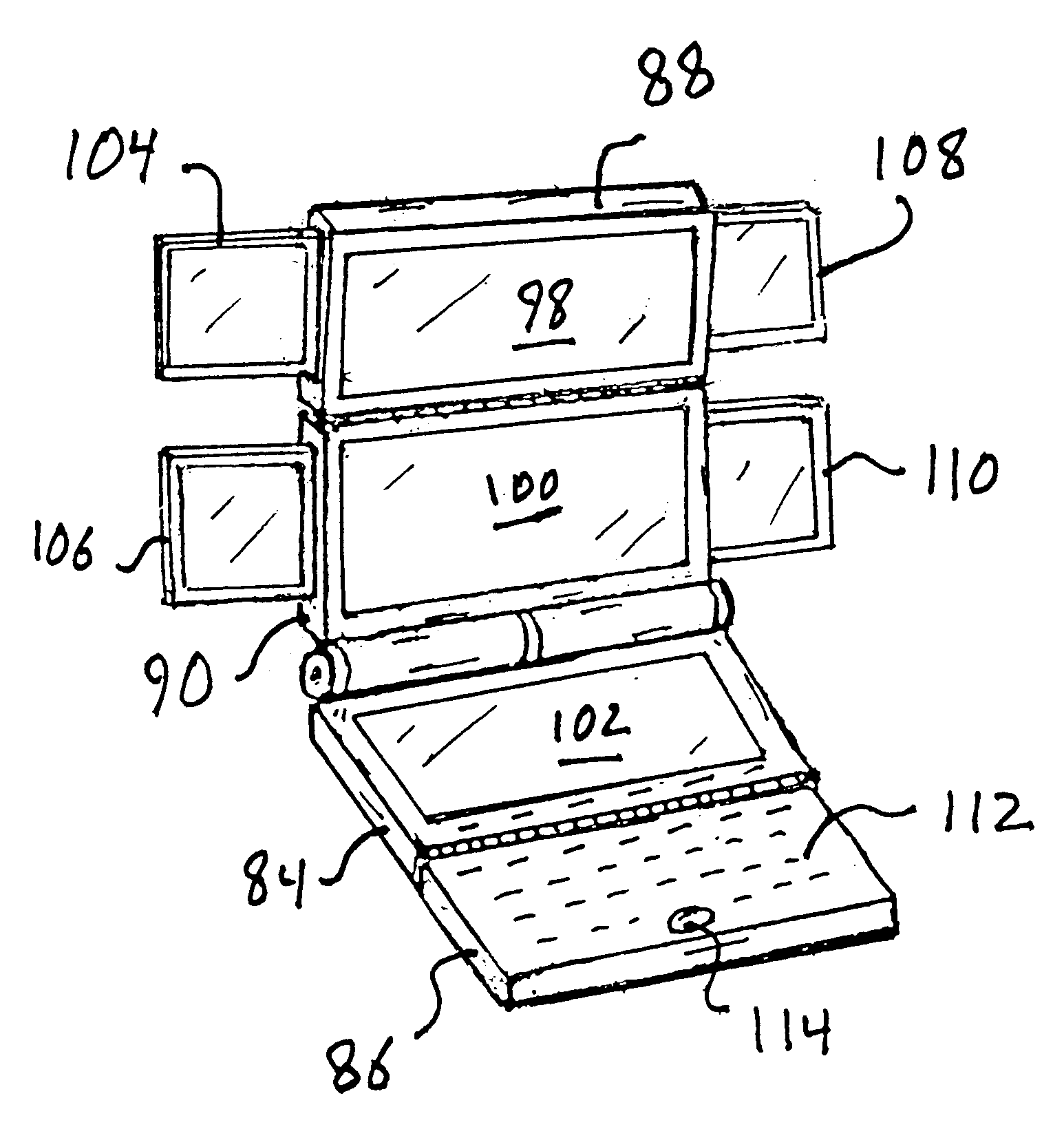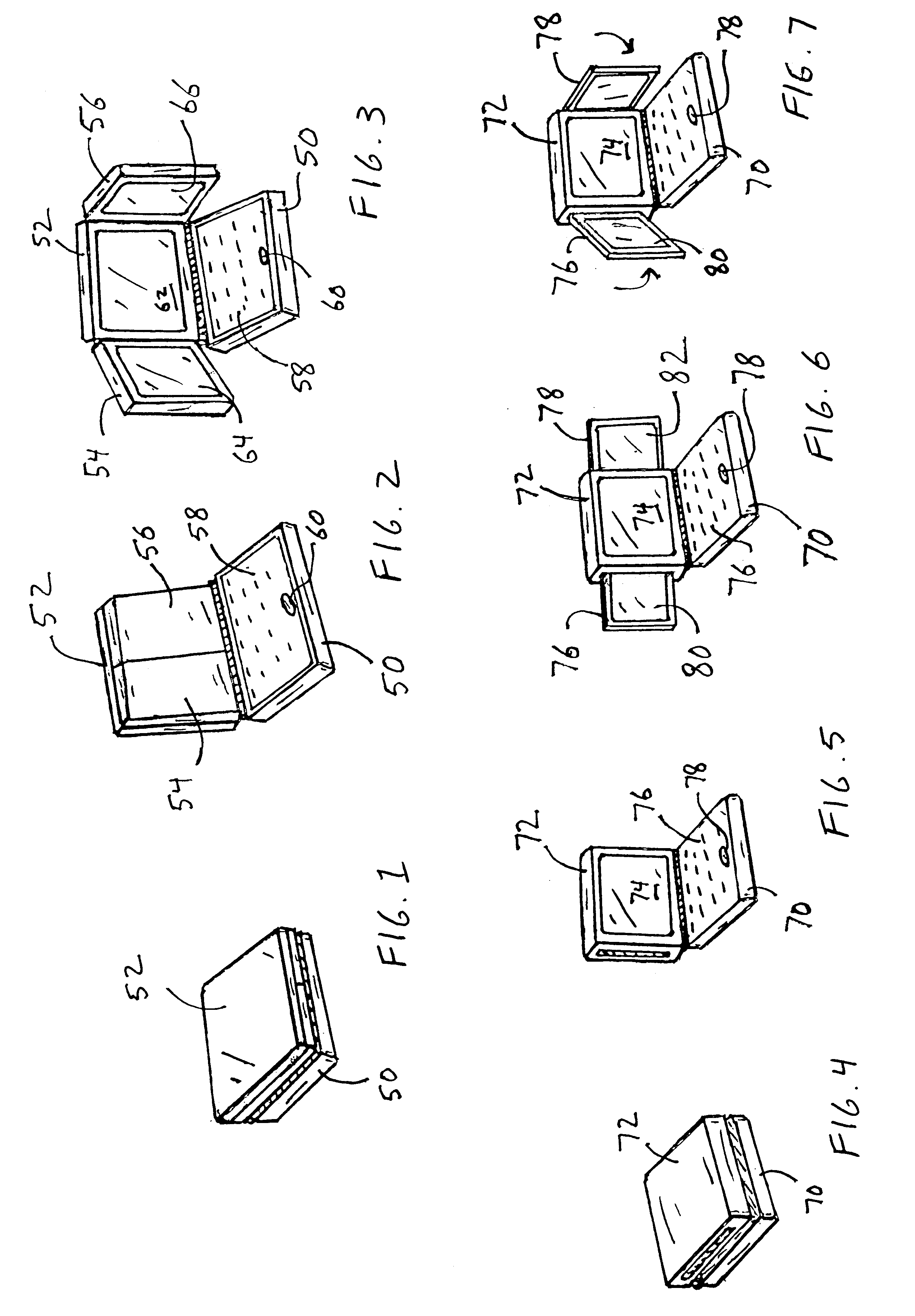Multiple display portable computing devices
a portable computing and display technology, applied in the field of multi-display portable computing devices, can solve the problems of reducing the volume requirement, rejecting display devices, and not linear in surface area of flat display pricing, so as to reduce the volume requirement, and manufacture more thinly.
- Summary
- Abstract
- Description
- Claims
- Application Information
AI Technical Summary
Benefits of technology
Problems solved by technology
Method used
Image
Examples
Embodiment Construction
A portable personal computer or computing device is generally shown in FIG. 1 in a folded or compact configuration, showing combined functional panels (as defined above) and case elements 50, 52. The portable computing device of FIG. 1 is shown in a partially unfolded or deployed configuration in FIG. 2. Case element 50 is an input panel, with keyboard 58 and trackball 60, while case element 52 is overlaid on an inside surface (not designated) by additional internal case elements or functional panels 54, 56. In FIG. 3, the portable computer of FIGS. 1 and 2 is shown in a fully unfolded or deployed configuration, revealing case elements 52, 54 and 56 to be output panels respectively provided with flat screens 62, 64 and 66. Panels 52, 54 and 56 constitute a triptych, or three paneled foldable device, with a compact configuration protecting sensitive inner surfaces, in this case represented by screens or flat displays 62, 64, 66. Panels 54, 56 form auxiliary panels or wings, joined fo...
PUM
 Login to View More
Login to View More Abstract
Description
Claims
Application Information
 Login to View More
Login to View More - R&D
- Intellectual Property
- Life Sciences
- Materials
- Tech Scout
- Unparalleled Data Quality
- Higher Quality Content
- 60% Fewer Hallucinations
Browse by: Latest US Patents, China's latest patents, Technical Efficacy Thesaurus, Application Domain, Technology Topic, Popular Technical Reports.
© 2025 PatSnap. All rights reserved.Legal|Privacy policy|Modern Slavery Act Transparency Statement|Sitemap|About US| Contact US: help@patsnap.com



